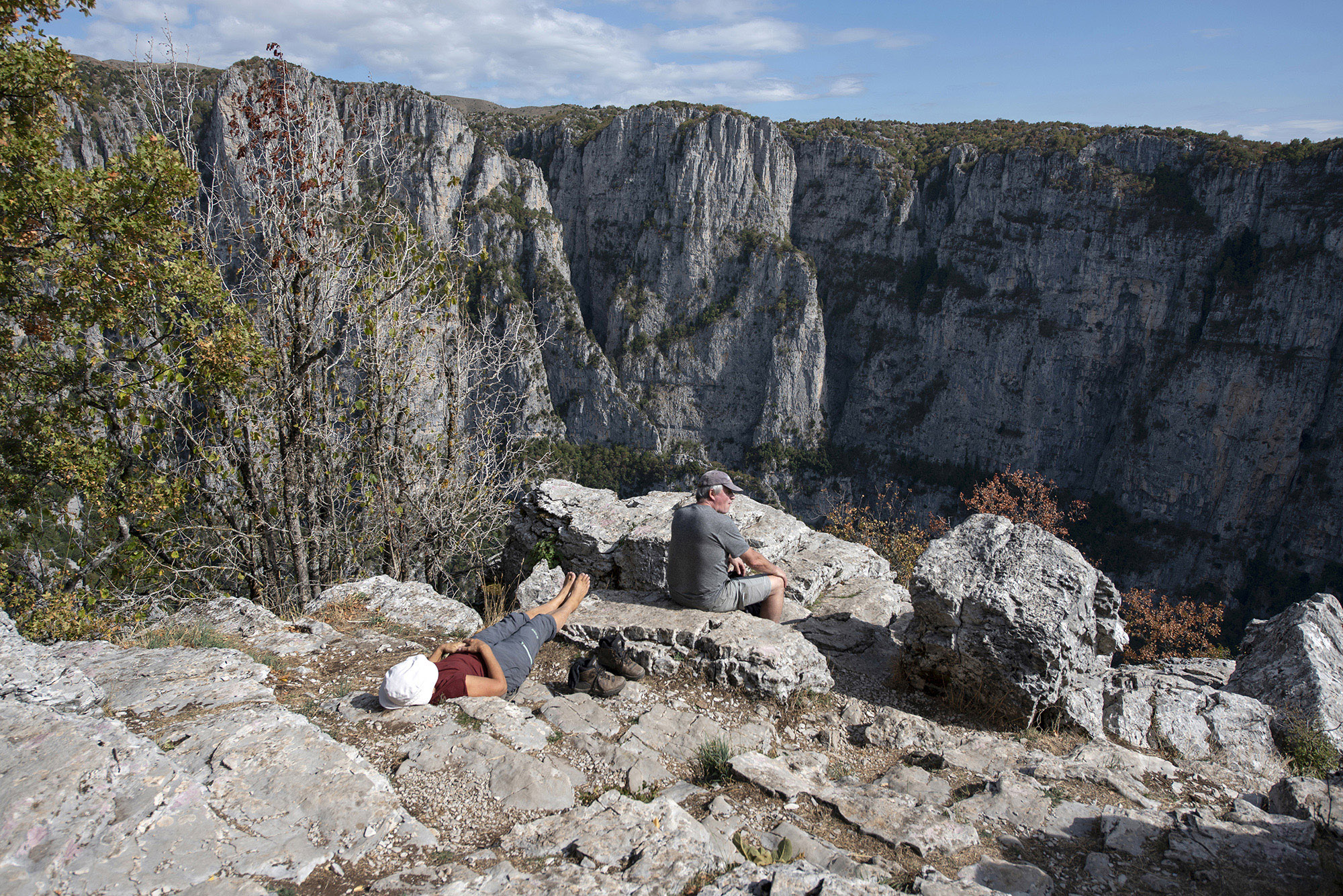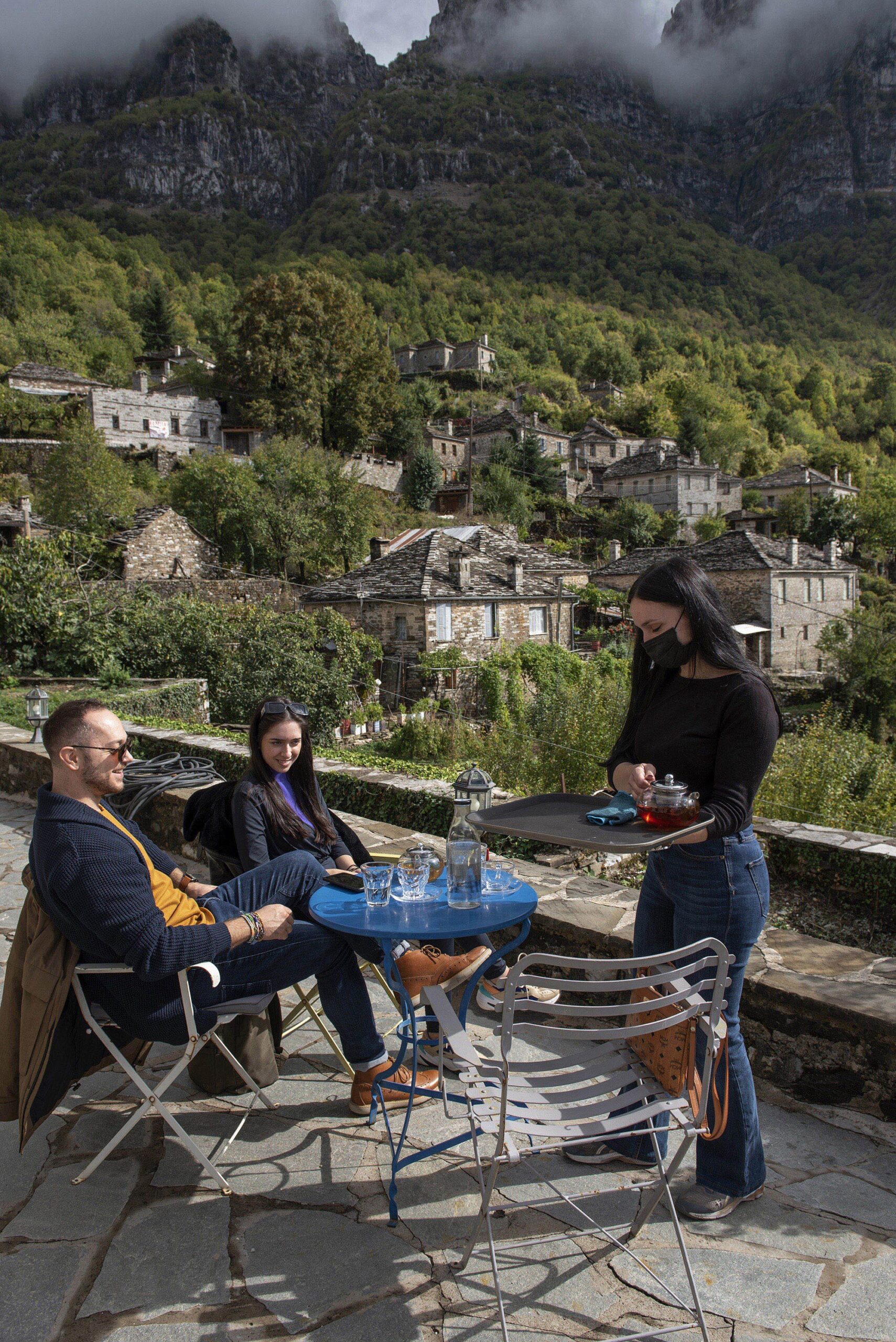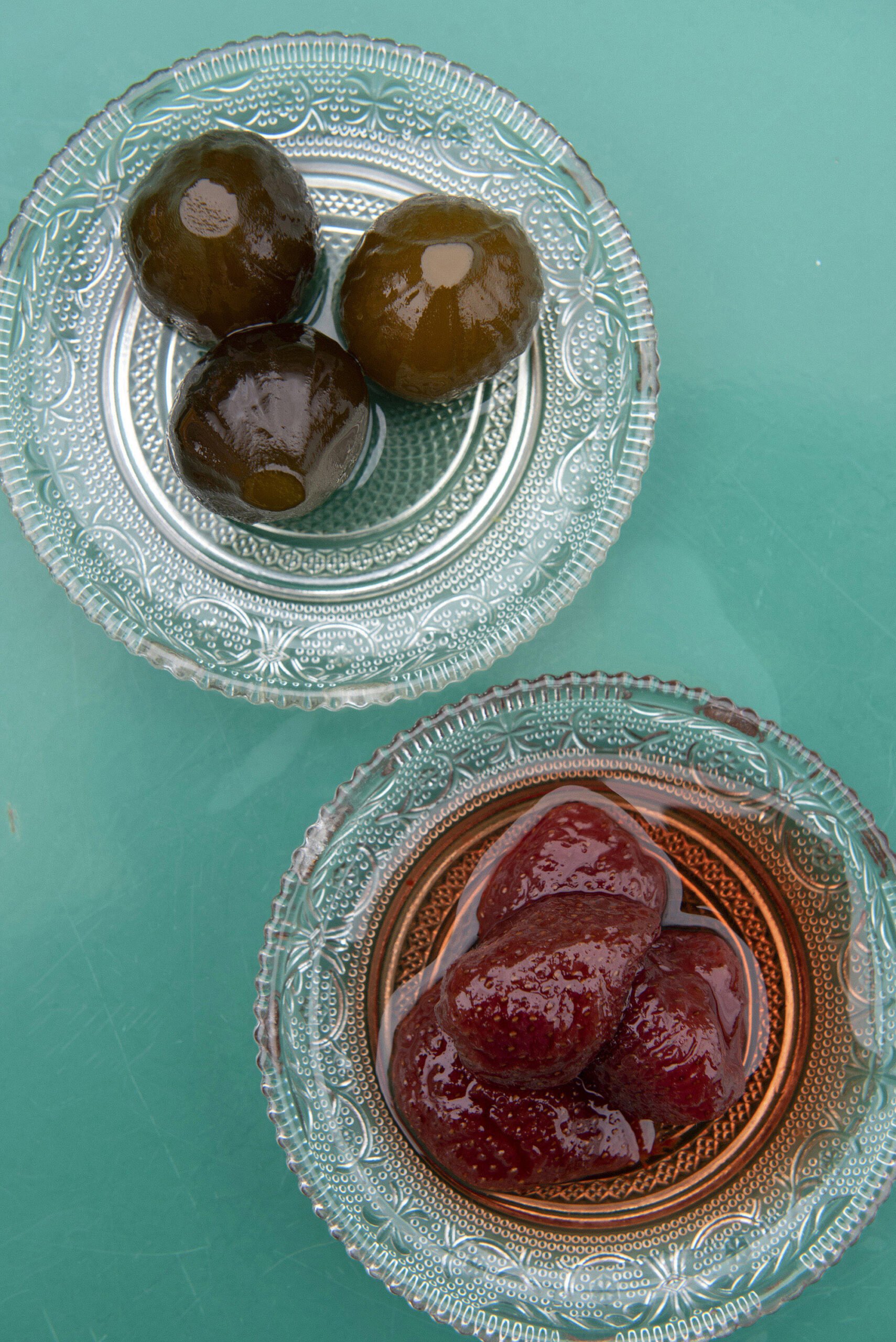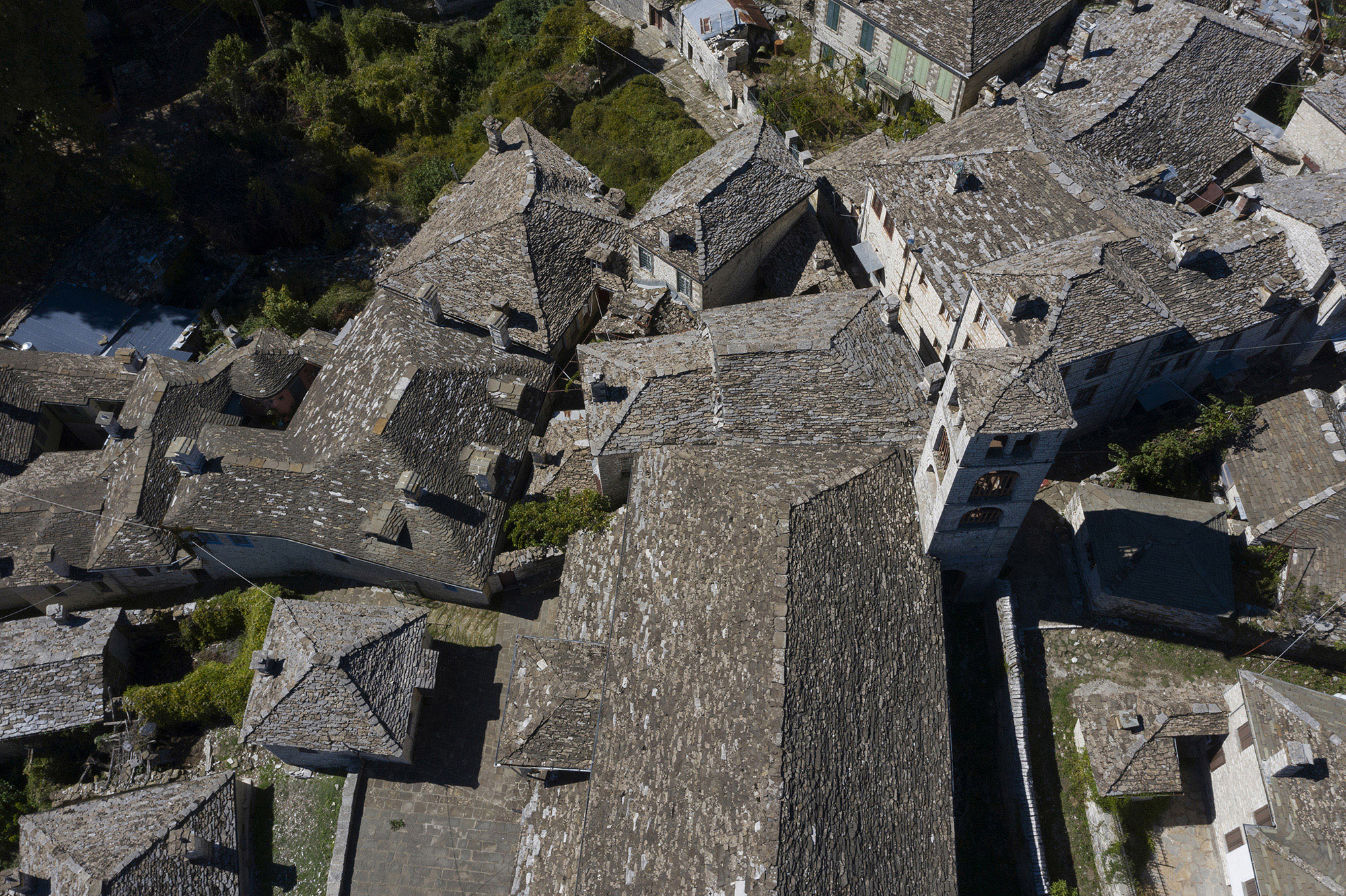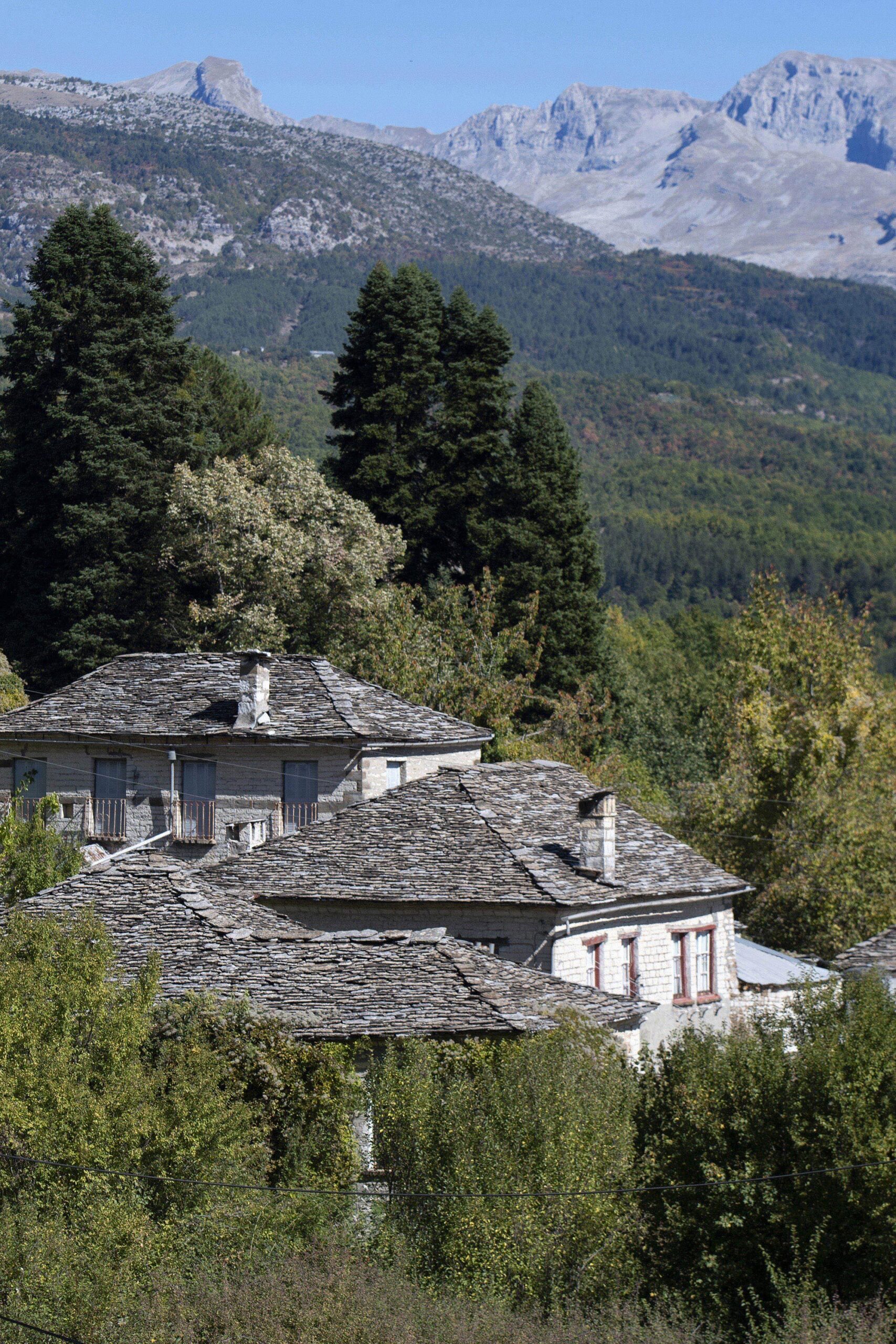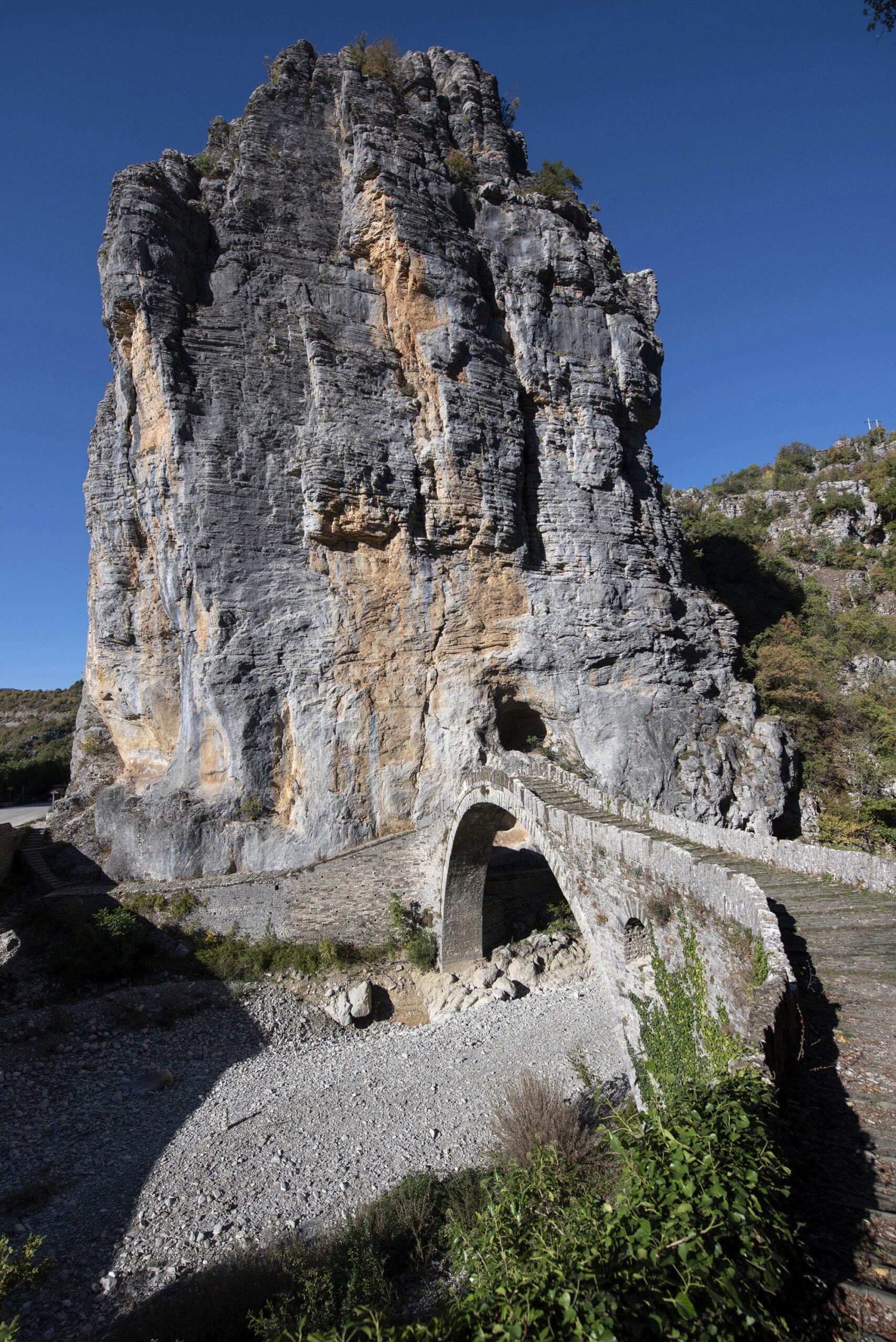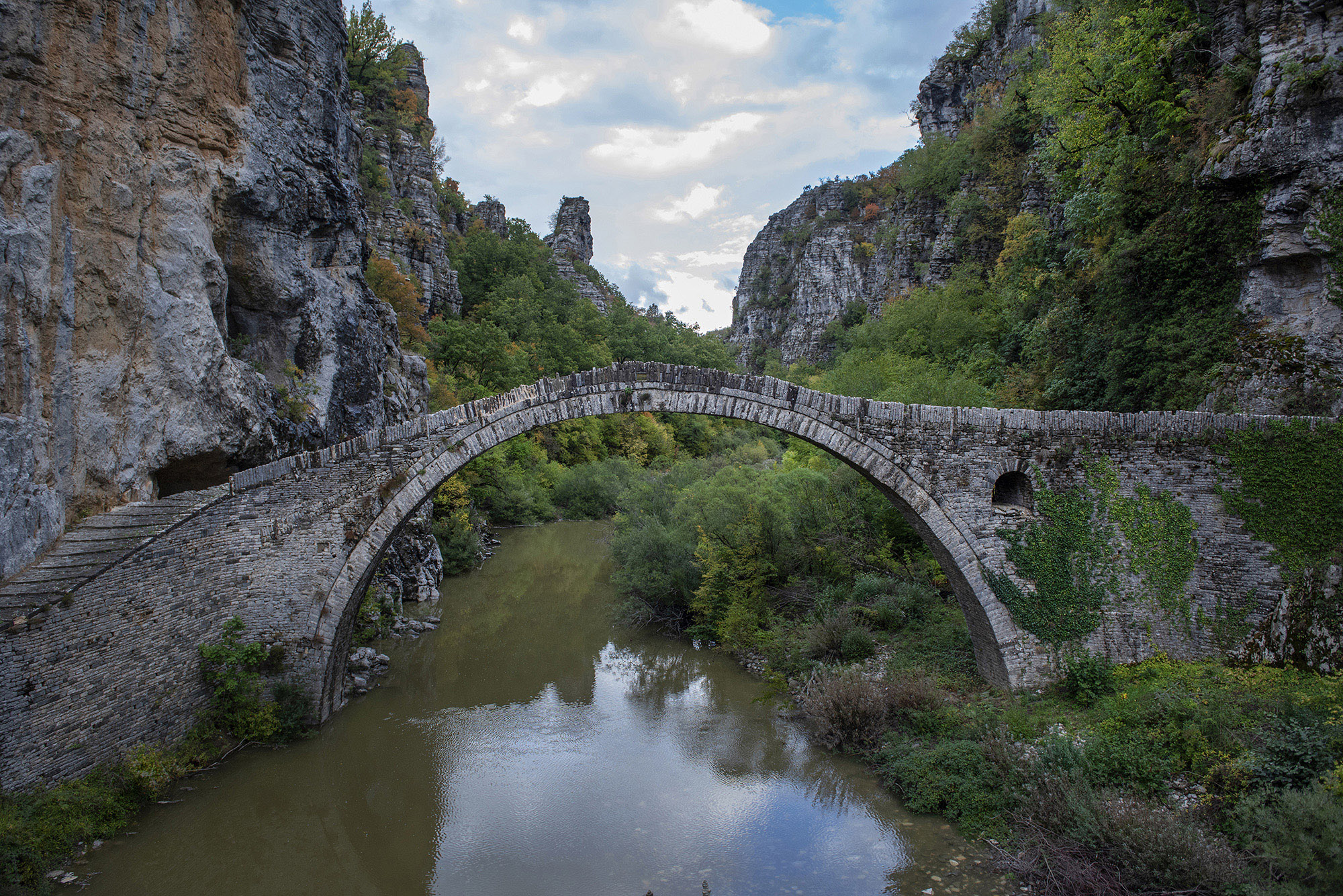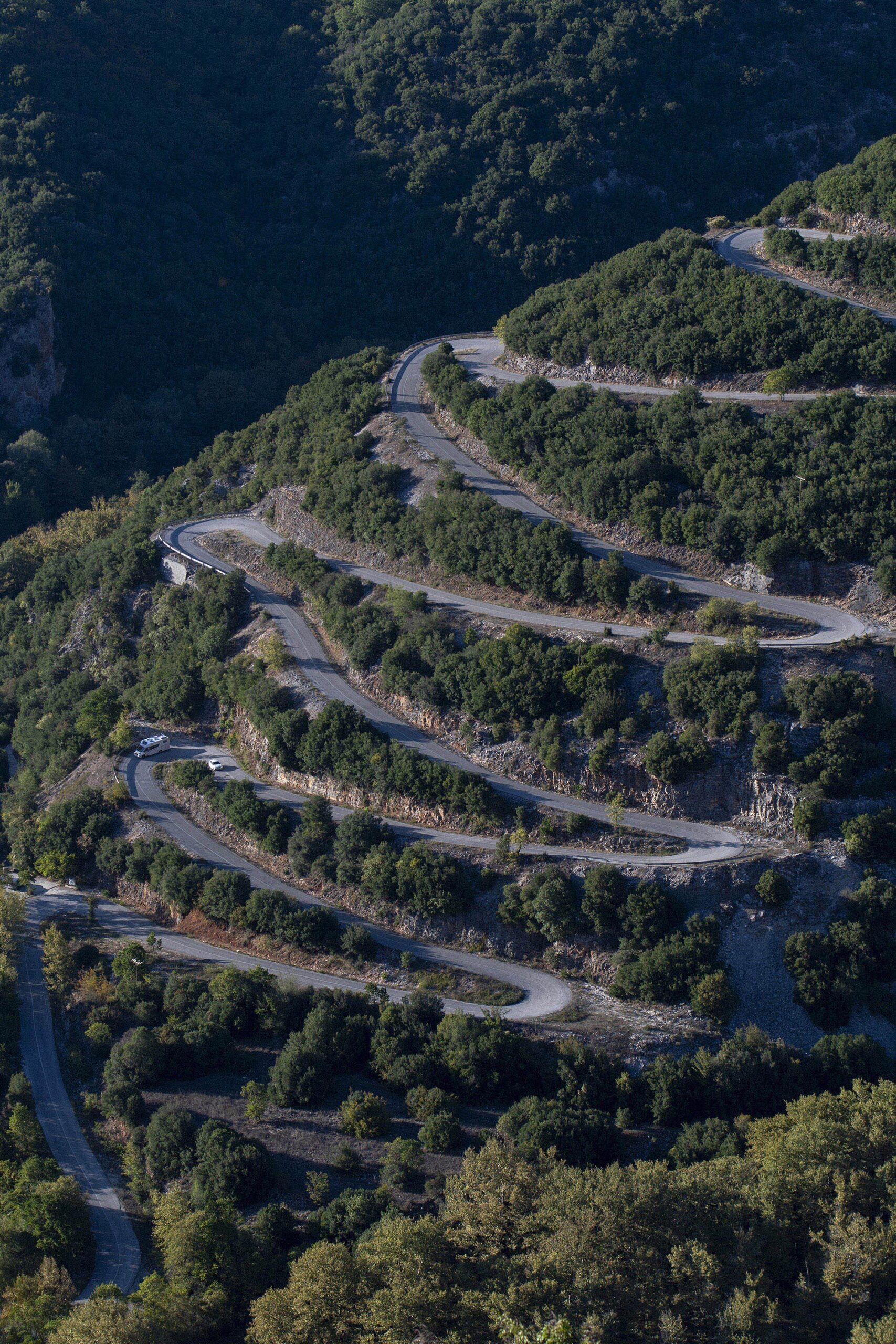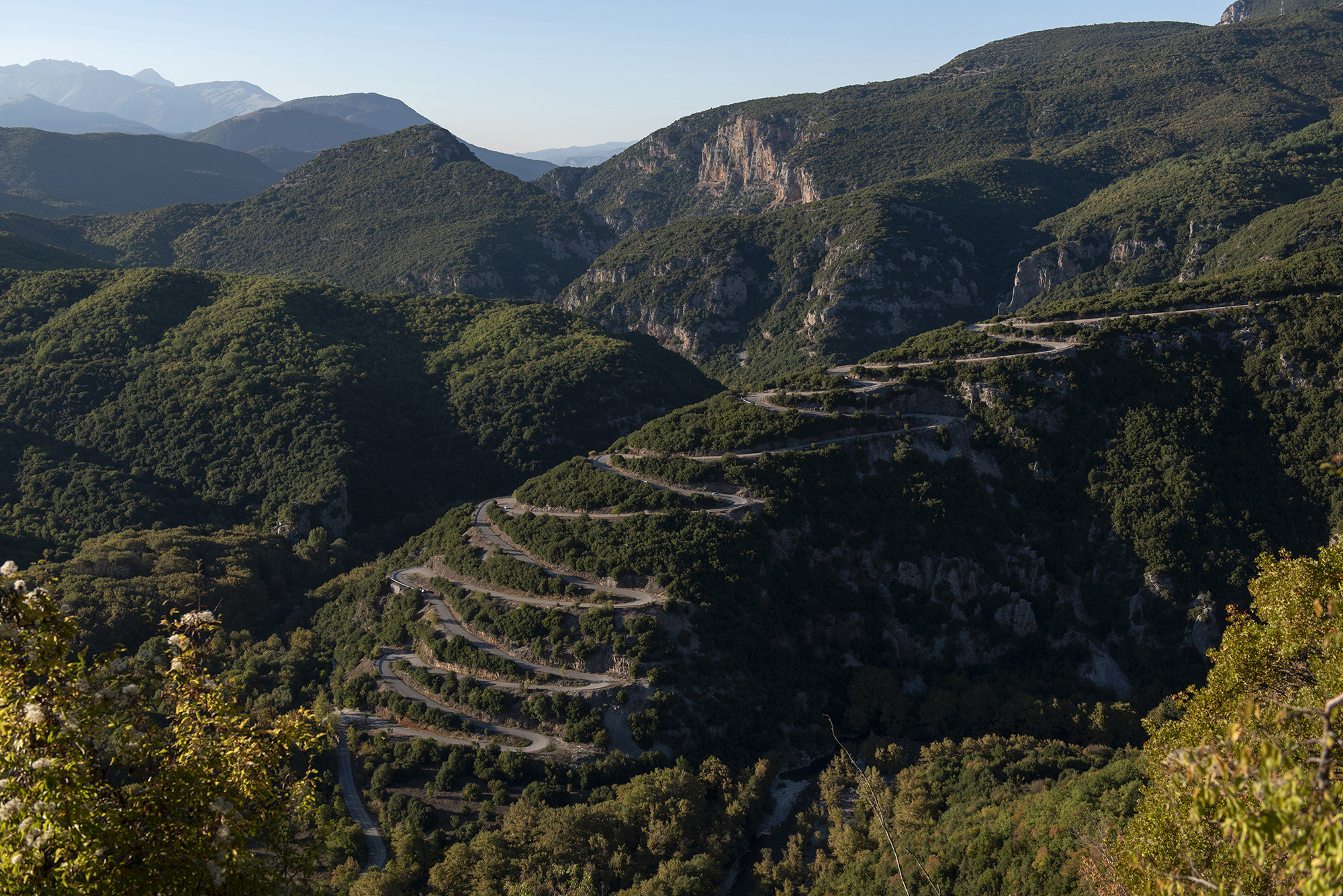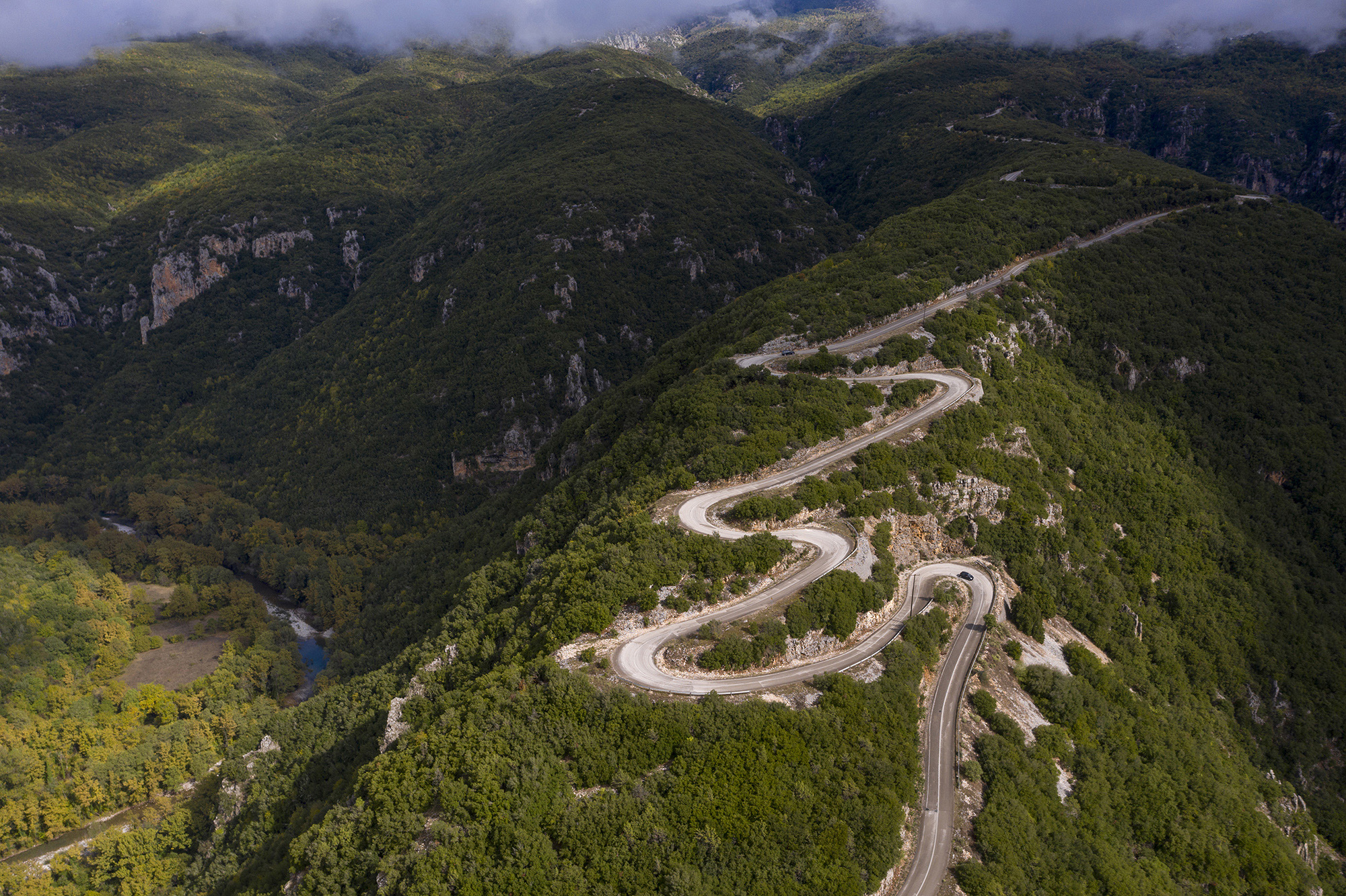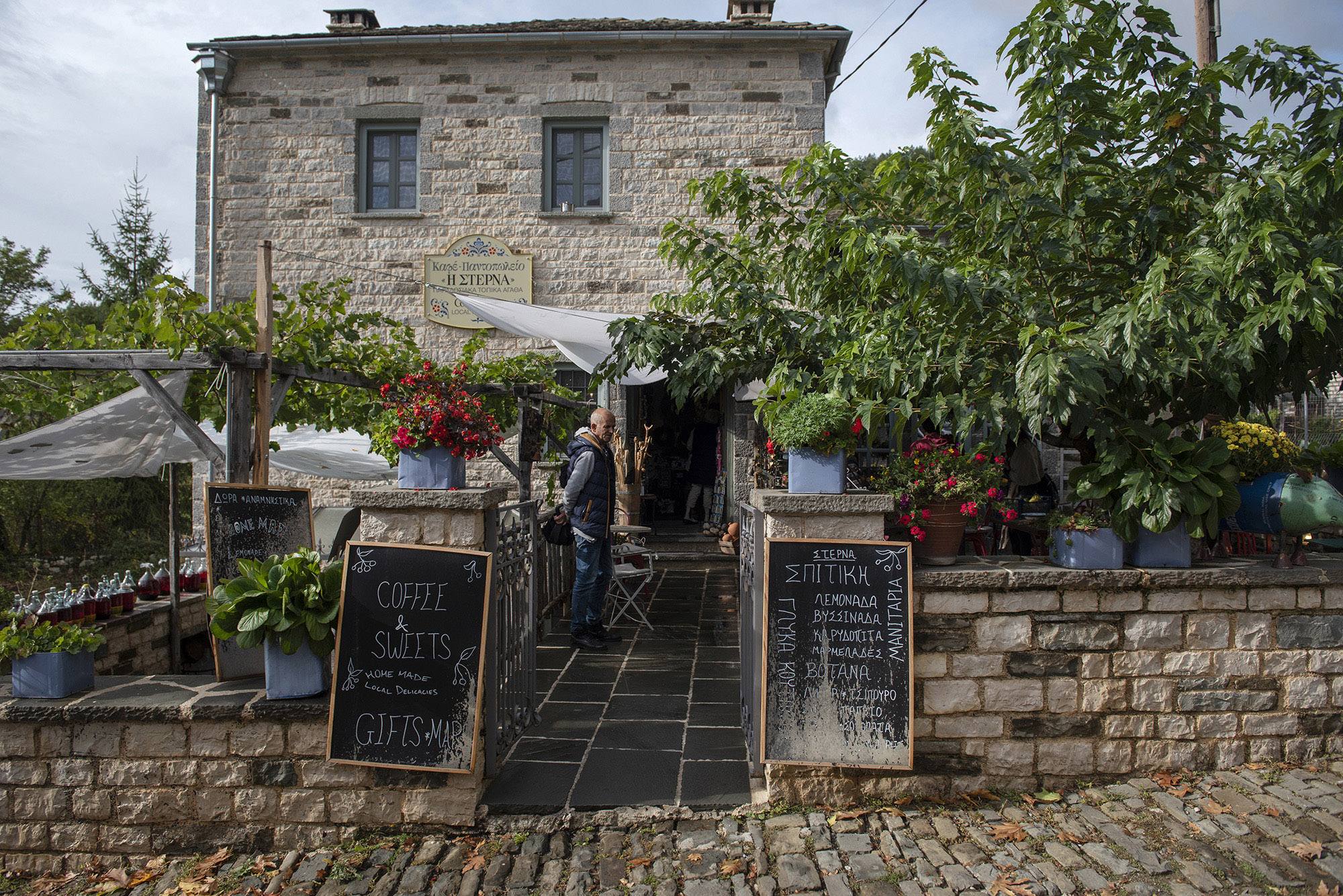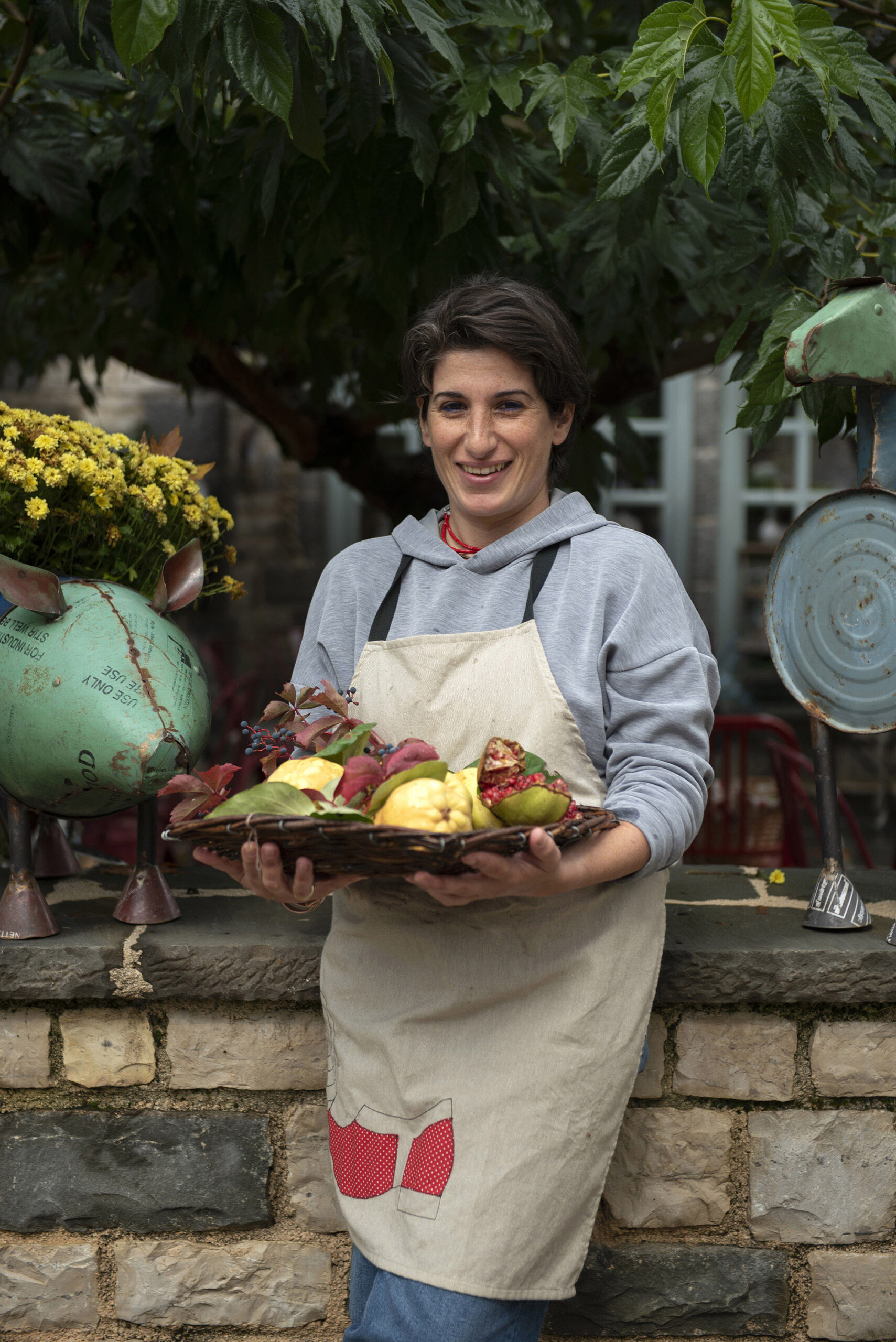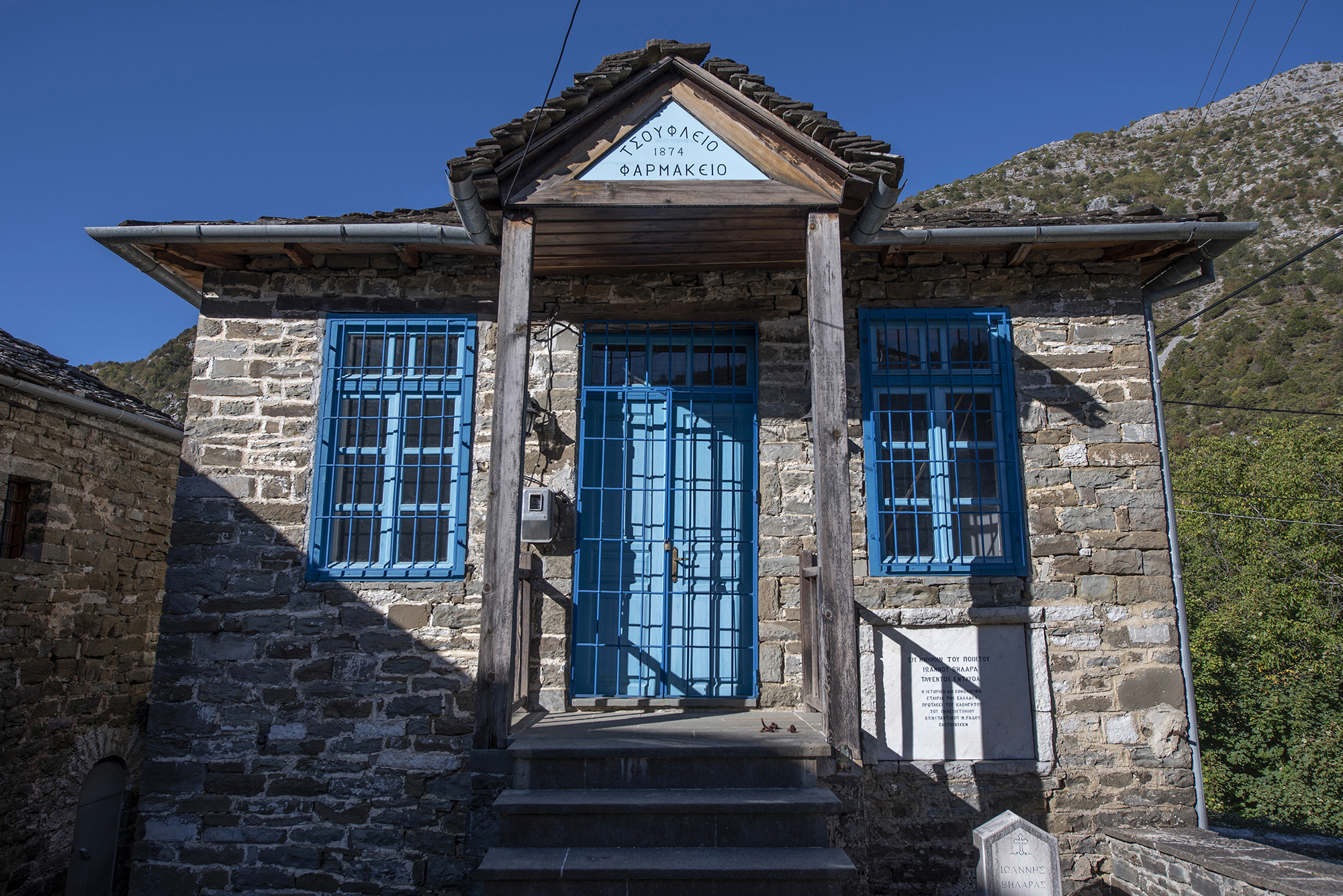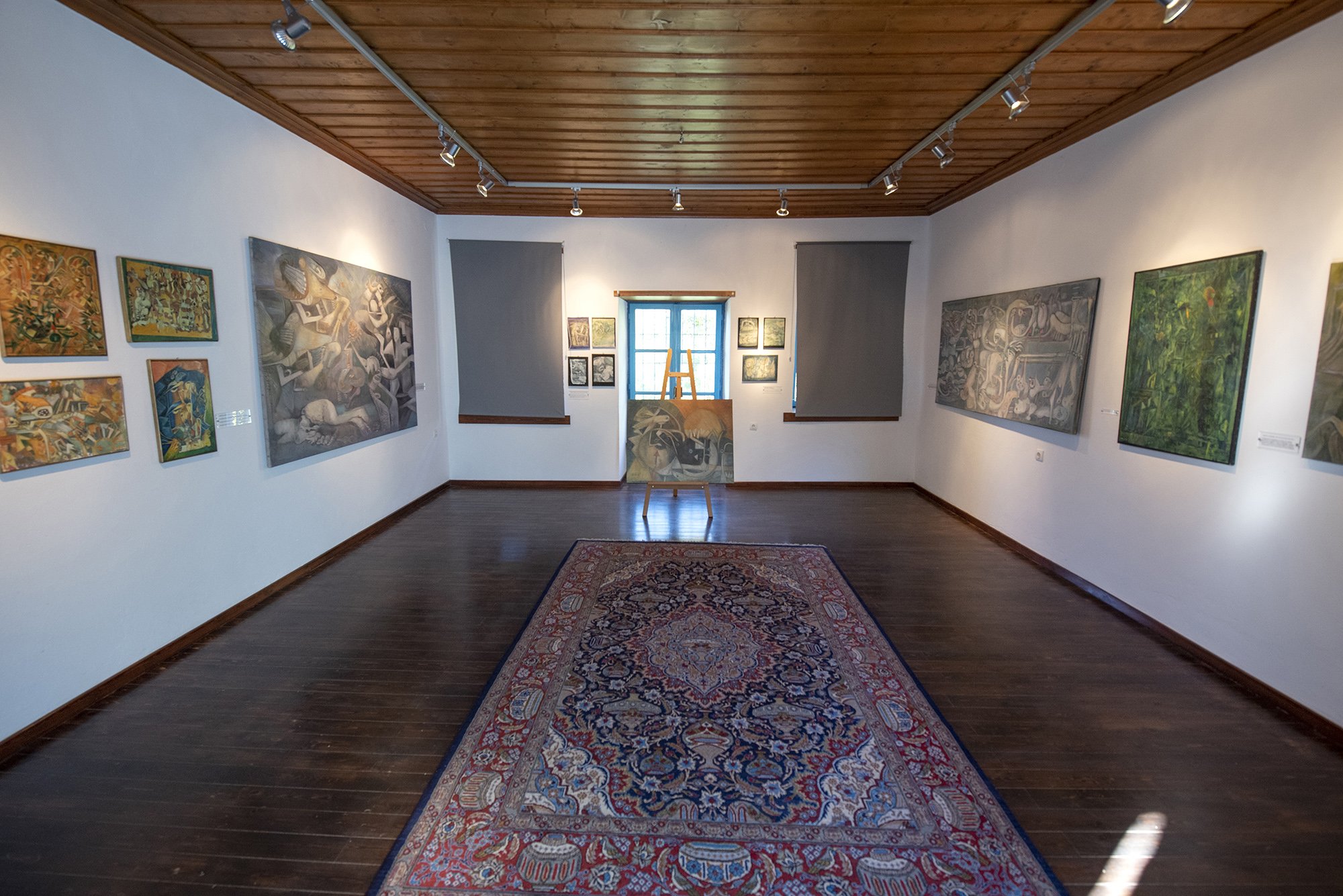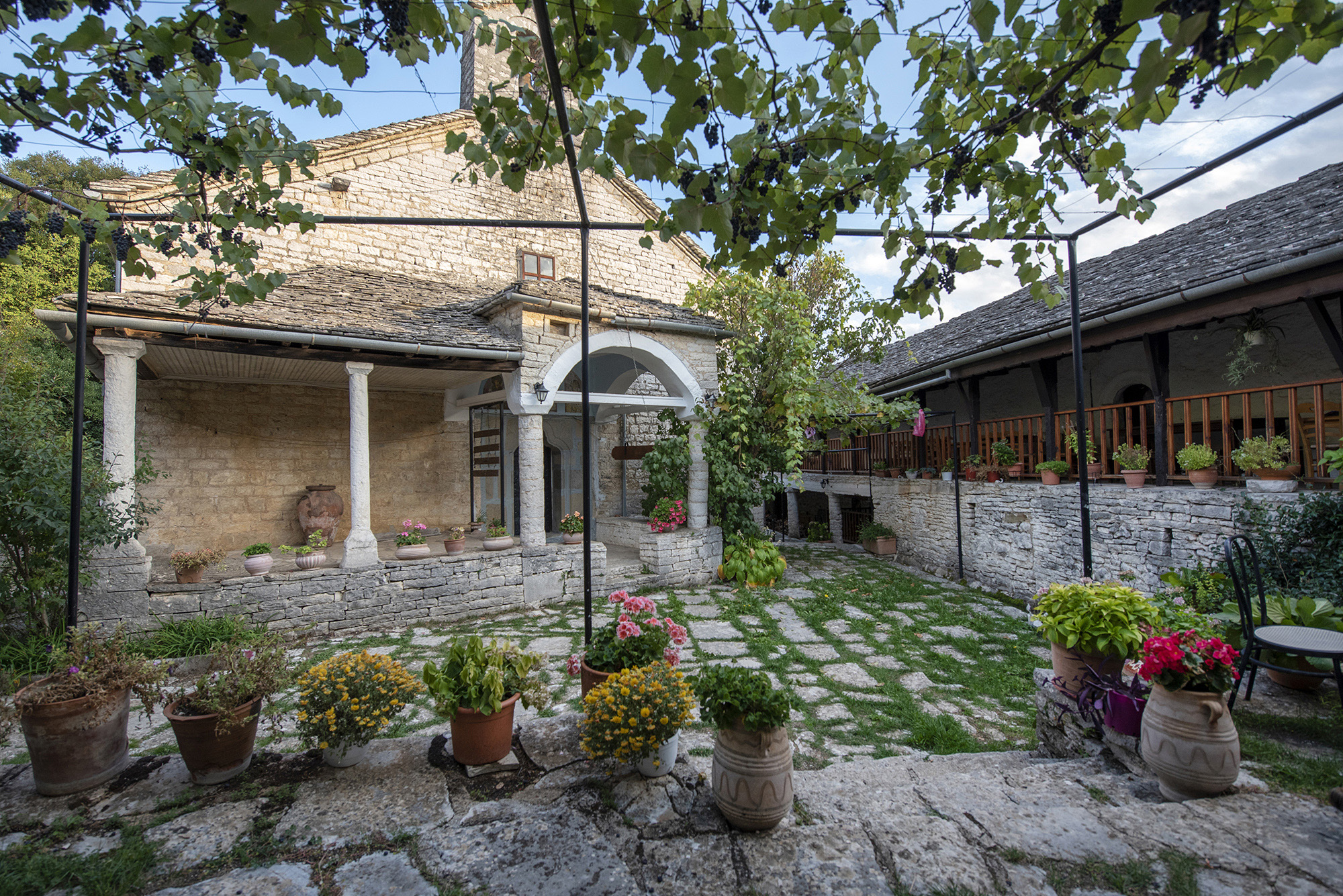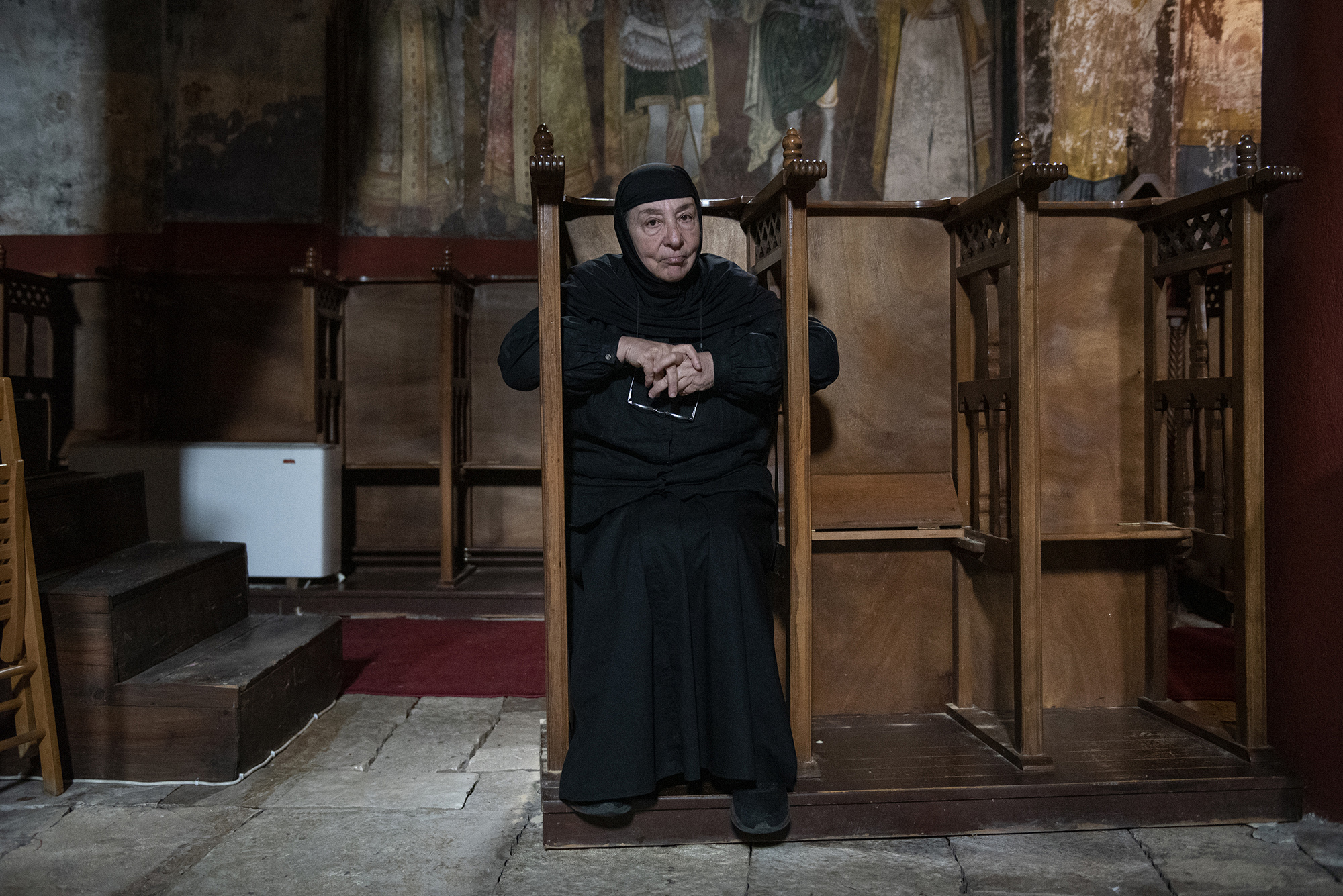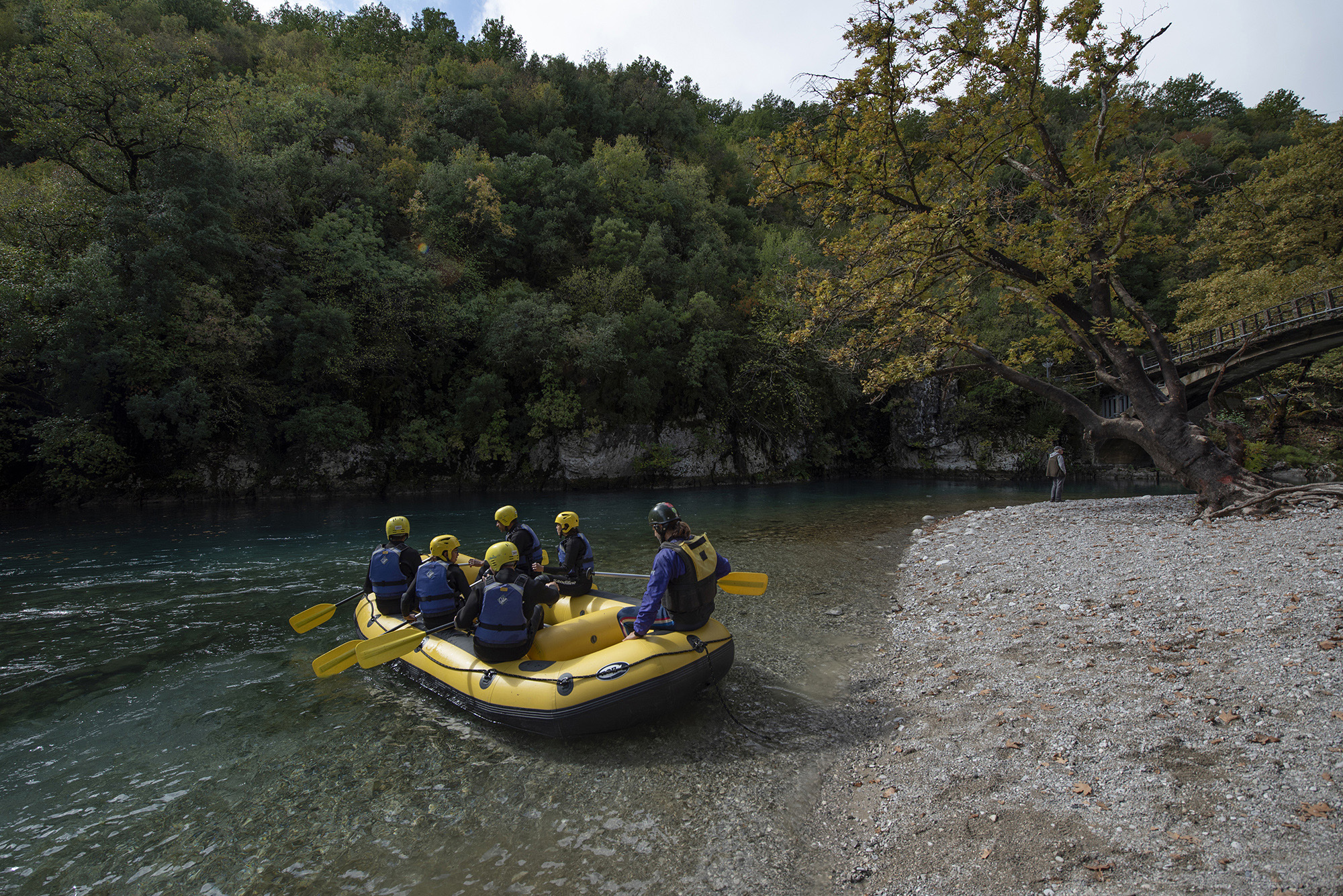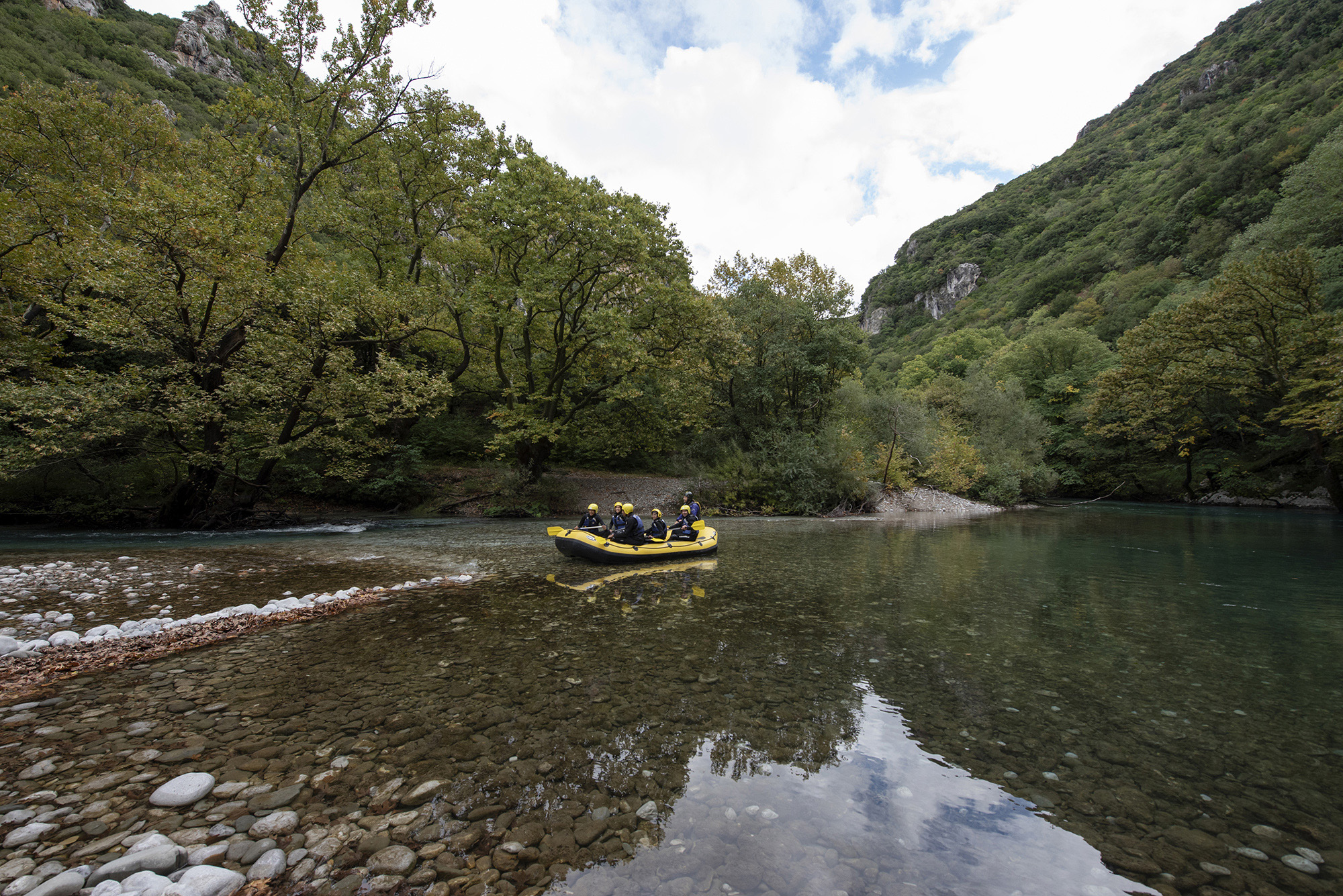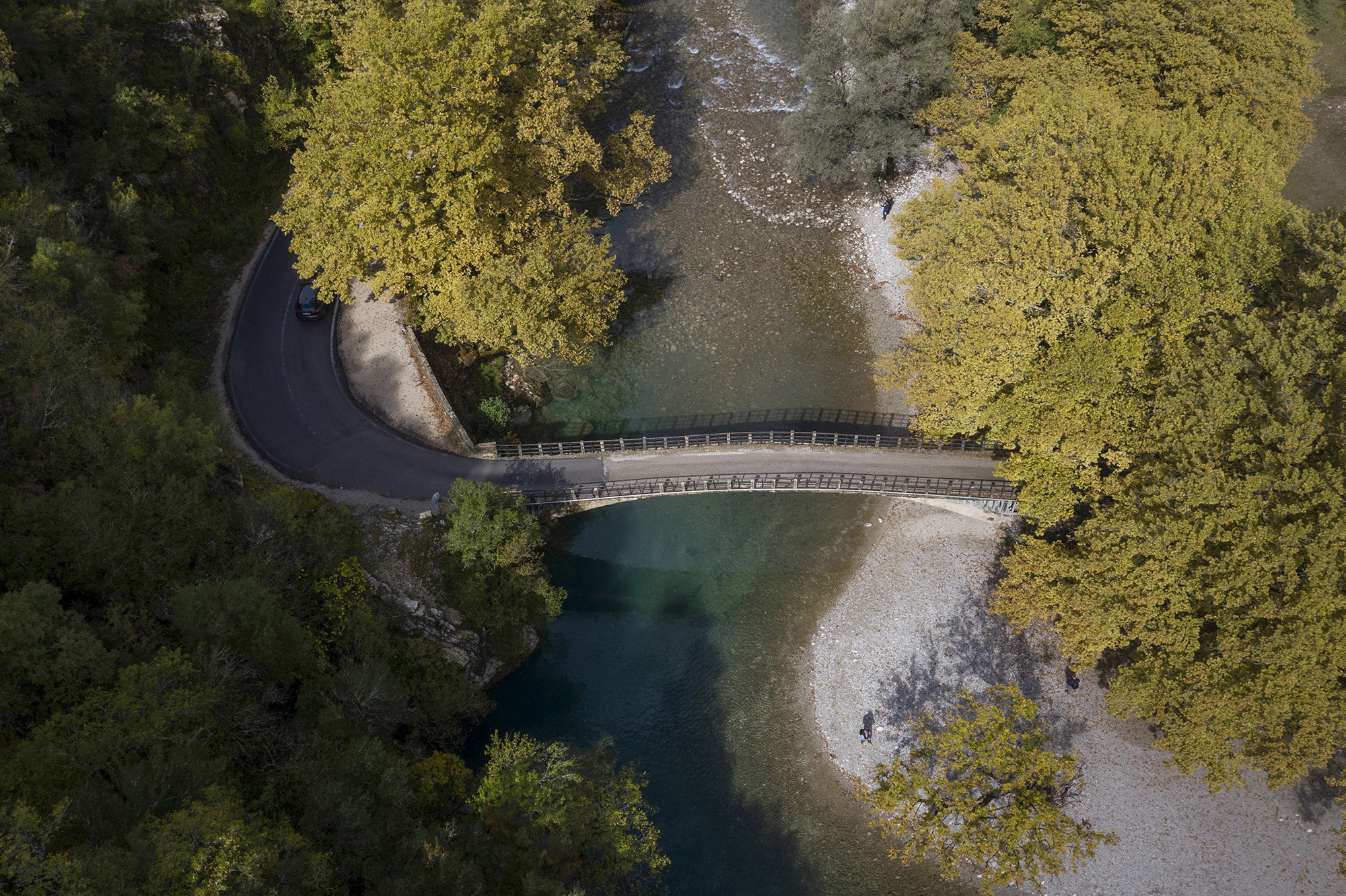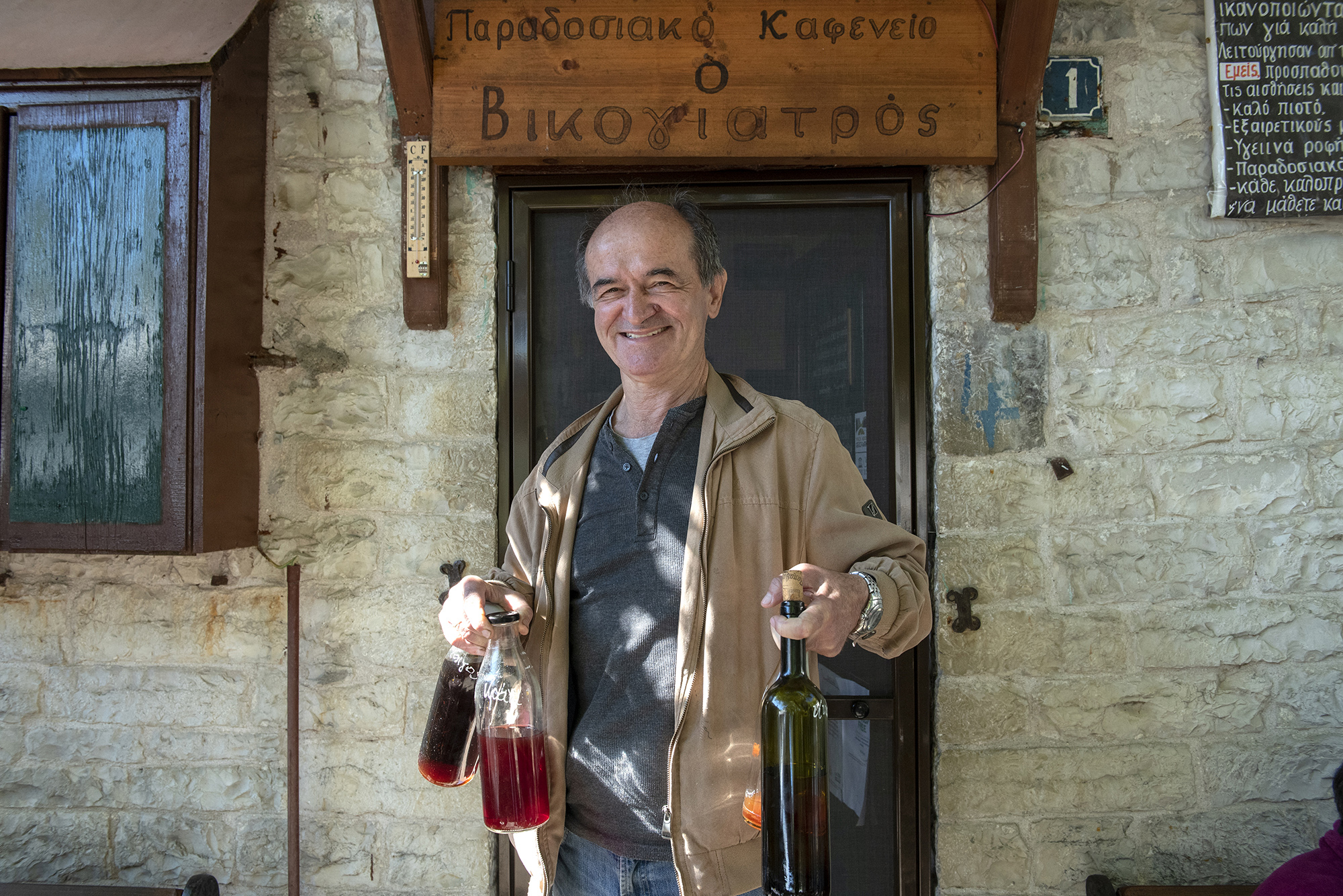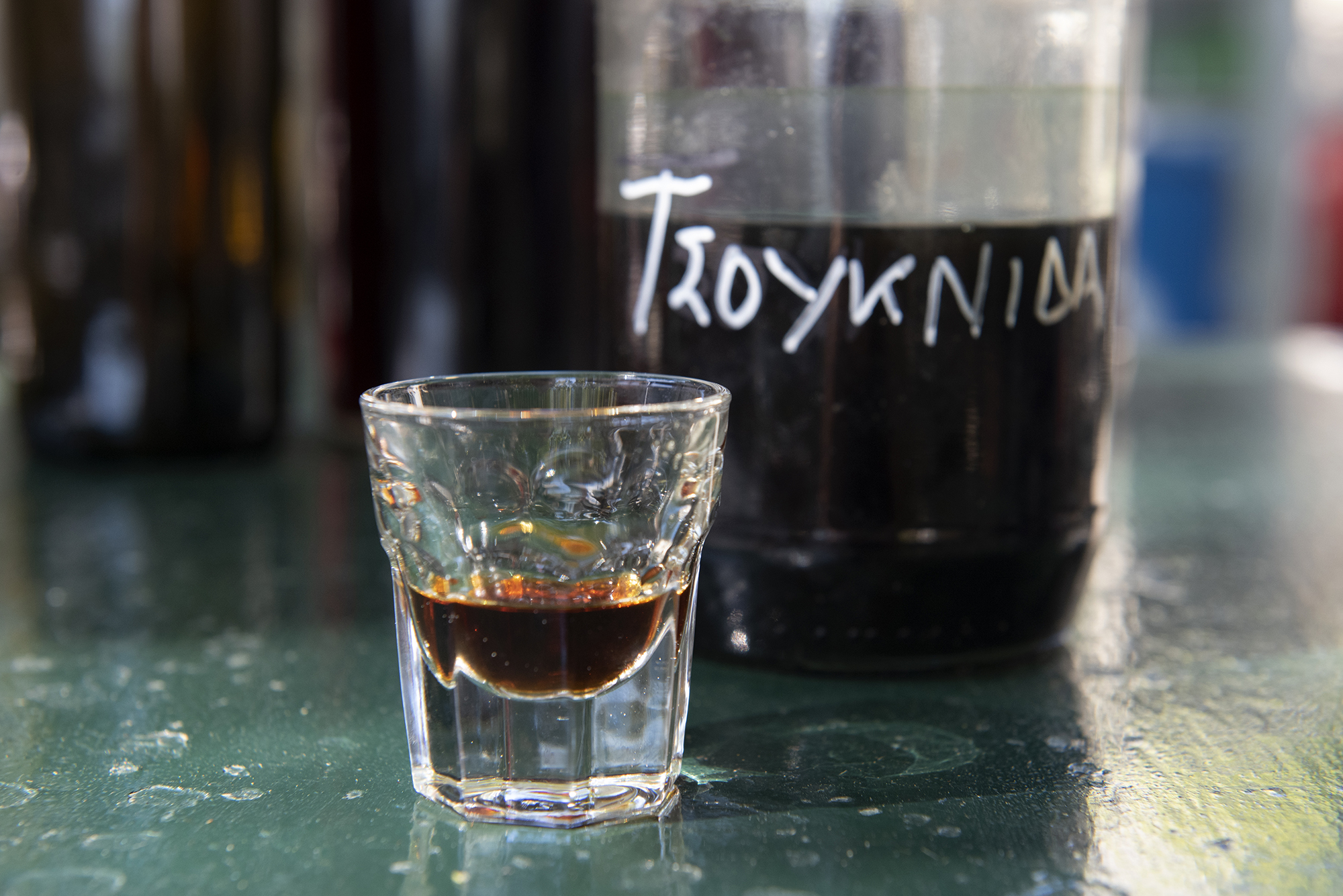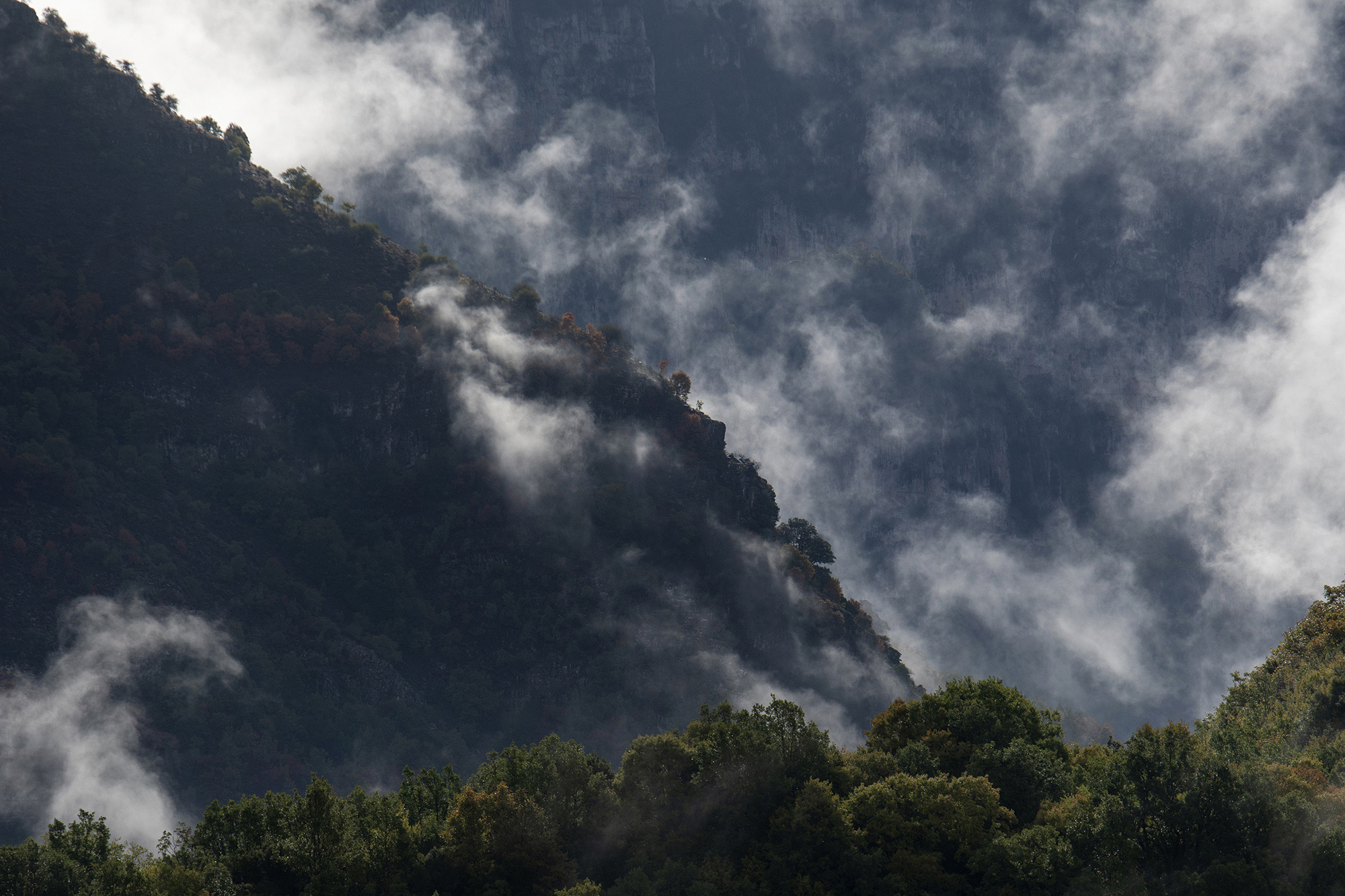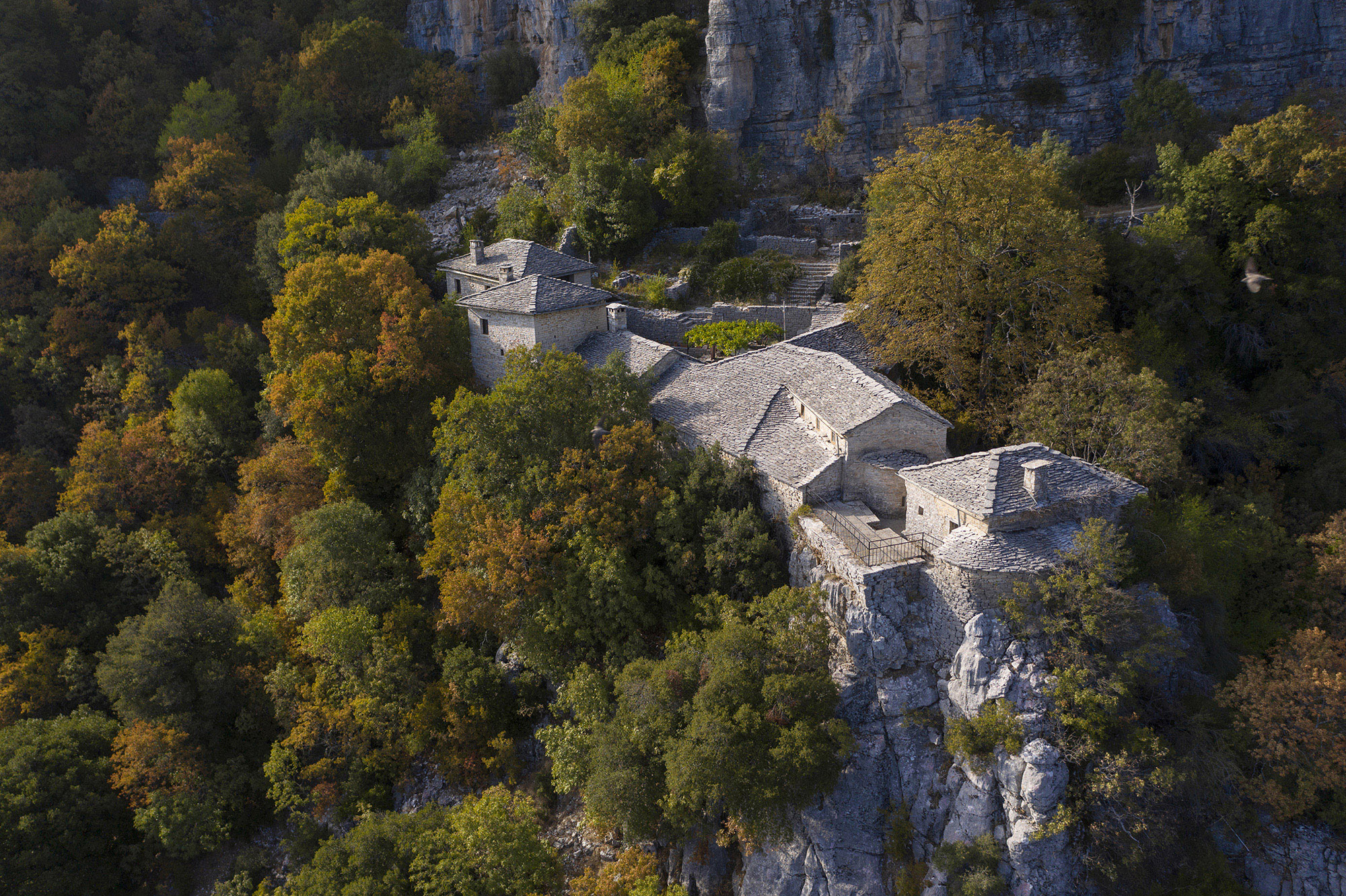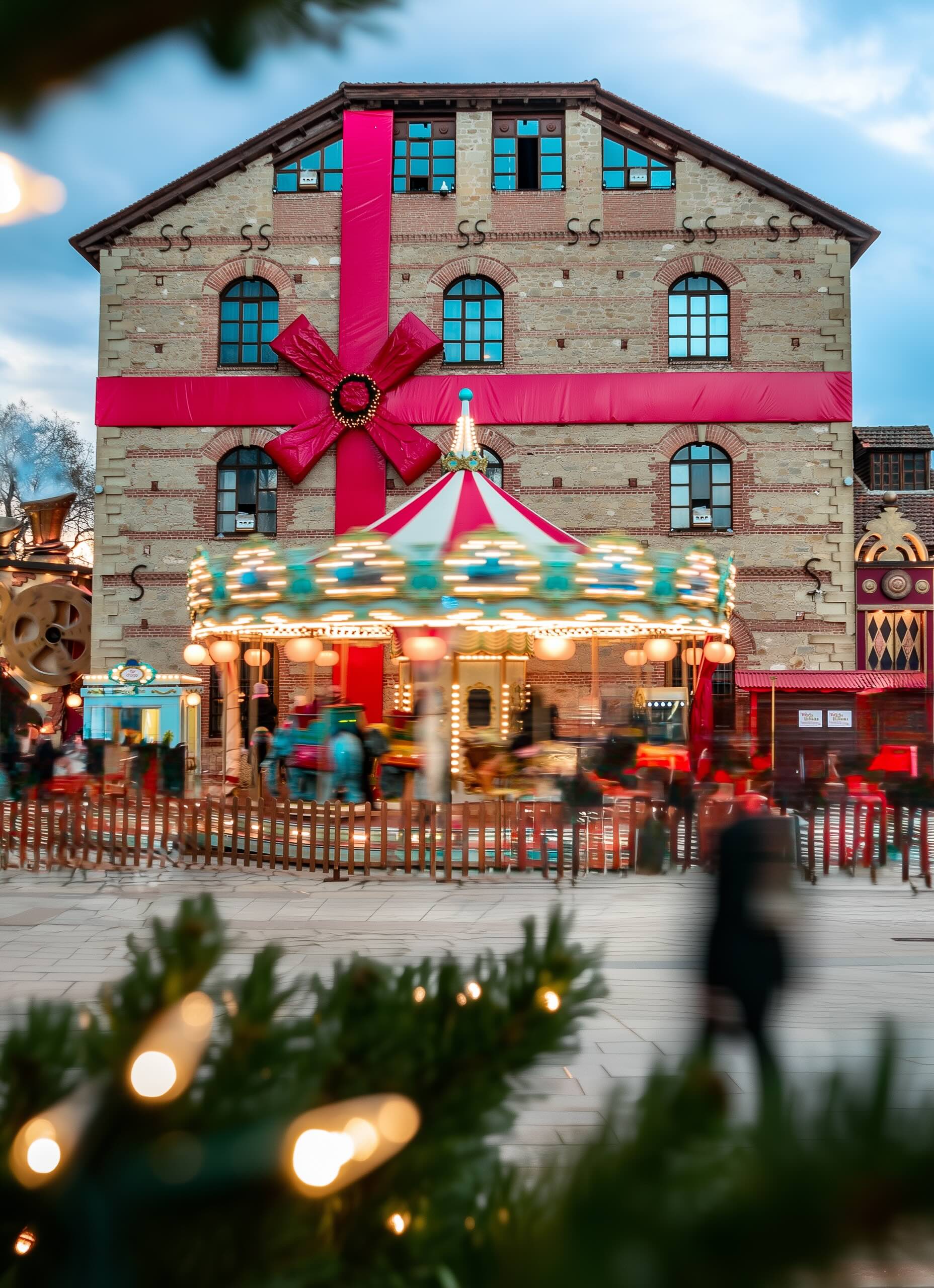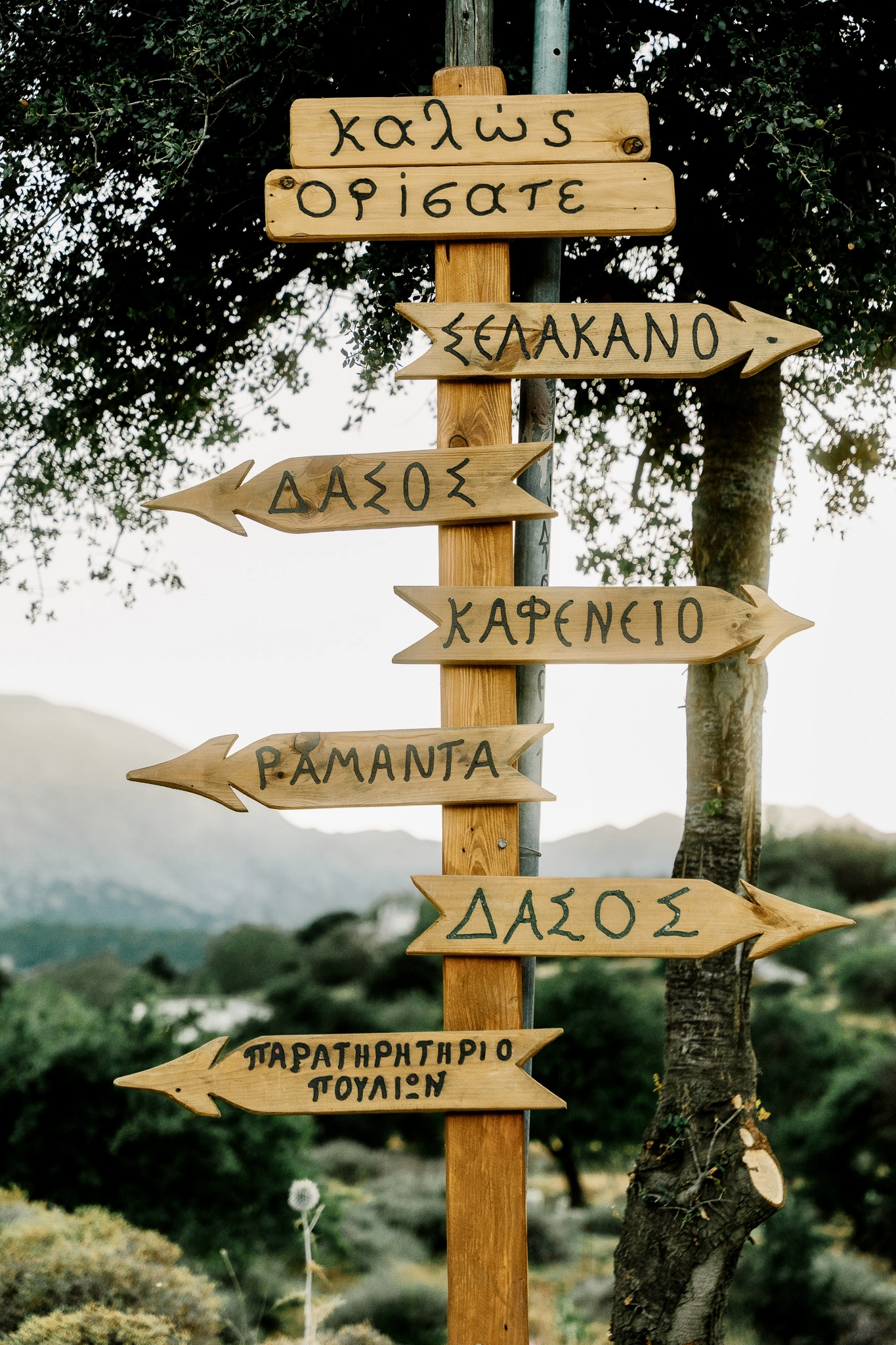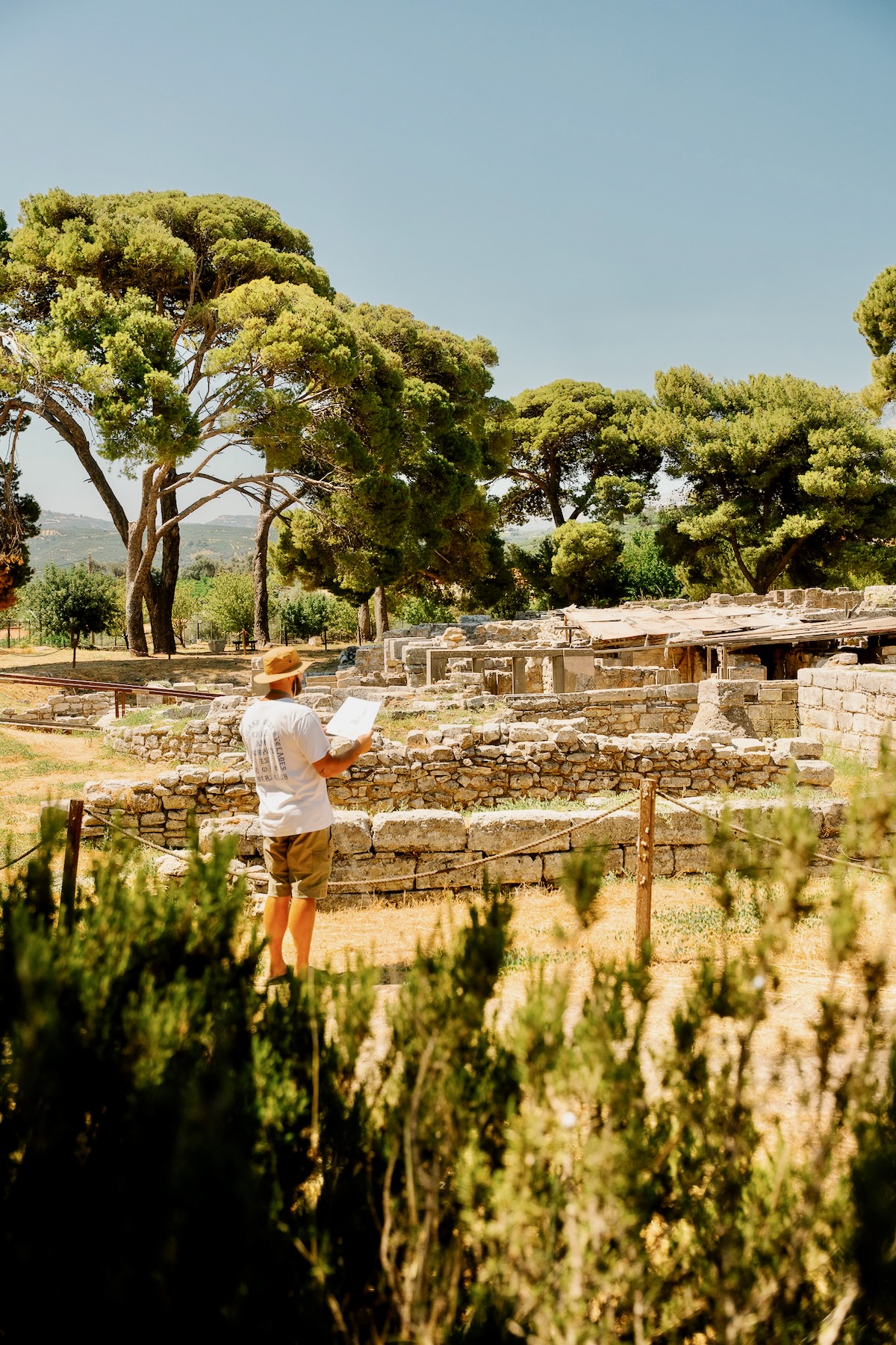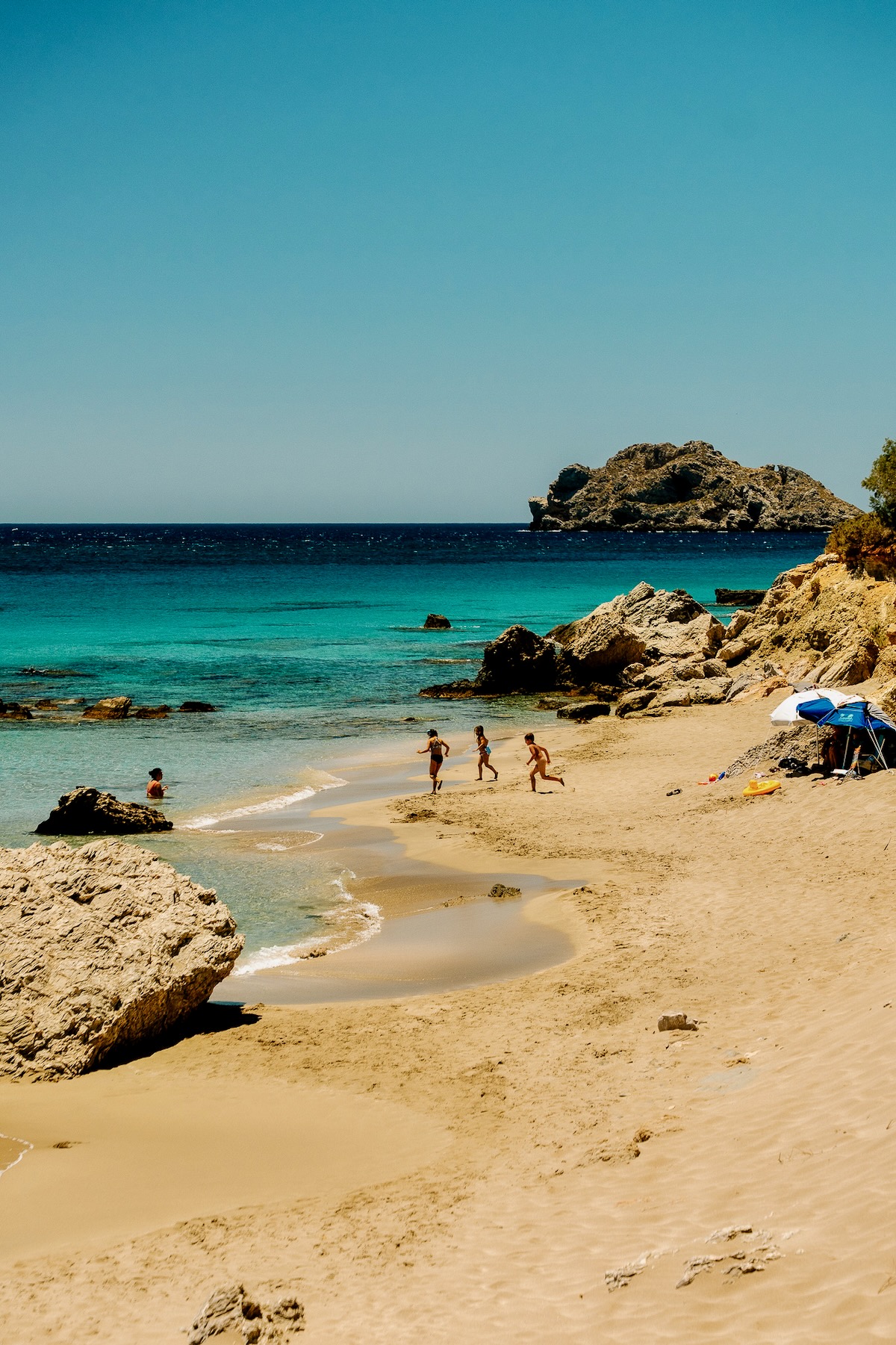It is a whole universe; our lives in their true dimension. It is the pluralism of Zagori that brings it to the forefront every time someone seeks the truth behind the descriptions.
Stone-built villages, exciting routes, arched bridges that once brought people and cultures closer together, mountains, gorges, nature. Stories and flavours that bring us closer to our gastronomic culture. Enjoy Zagori in its true dimension through ten amazing stops-offs.
Pinocchio’s spoon sweets, Mikro Papingo
Pinocchio is located near the church of the settlement and just a breath away from the imposing Towers of Astraka (namely vertical rock formations resembling massive towers), so close you think that you can reach out and feel the rock’s harshness. In this magical -almost cinematic- balcony Olga and Kostas serve delicious spoon sweets (sweet preserves), rose, fig, quince and apricot, as well as mouth-watering desserts such as lemon pie, walnut pie and ravani (Greek semolina cake). The view is literally breath-taking and steals the show. A stop here, for a hot brew or a freshly-baked focaccia or pizza, will make you love this place a little bit more. If you cannot get enough of this view, you can stay in one of Pinocchio’s beautiful rooms.
+30 694 8630433
A visit to Dilofo
Built at an altitude of 900 metres, Dilofo is one of the most beautiful villages in Zagori, where entrance to any vehicle is prohibited. Strolling through its cobbled alleys you will have the opportunity to marvel at typical examples of Epirus architecture, as well as stunning views of lush nature. Thirteen metres high, the 1960 Loumidis mansion is the highest building in Zagori. Take a delightful walk around the settlement to discover with your own eyes the region’s unspeakable beauty and rich tradition.
The bridge of Noutsos or Kokoris
A huge vertical rock renders Kokoris’ one-arch stone bridge even more impressive. It is located in central Zagori, a few hundred meters after the turn to Dilofo. The Bridge of Kokoris is about 24 metres long and 13 metres high. It was built in 1750 and its construction was financed by a benefactor of the time, Noutsos Kontodimos. However, over the years the bridge suffered considerable damage and so, in 1910, the owner of a mill from the village of Koukouli, named Kokoris, funded its reconstruction. Hence, the double name of the bridge. If you look carefully at the rocks next to the bridge, you will notice that there is a cave. It is said that the famous robber Davelis hid in that cave with two other bandits, when chased by a Turkish military unit in 1881. A low difficulty path of a little over 7 km starts from here leading to the villages of Dilofo, Vitsa and Monodendri.
The bends on the road to Papingo
It might seem absurd, yet the serpentine route towards Papingo is in and of itself one of the most scenic attractions in Zagori. Not one, not two, but fourteen hairpin bends make up a unique scape that can be admired from the area of Aristi just opposite. However, even while climbing the route, there are certain points along the way where you can stop safely to enjoy the view and take photos of the lush slopes and the Towers of Astraka opposite. Turn off the car engine and listen to nature’s powerful sound of silence.
Sterna, Papingo
A charming courtyard, smiling faces, delicious sweets, fine local produce and aesthetically pleasing decorative items, many of which handmade. Located at the entrance to the village, Sterna holds a warm welcome for all. Ellie, the shop’s manager, and her team display a cheerful disposition to accommodate guests. Depending on the season, many different spoon sweets, liquors, pies and traditional Greek pan sheet desserts are prepared here daily. Sweet aromas fill the air, while steaming hot coffee is served in pretty porcelain cups. Before you leave, take a stroll through the cellar, it’s worth it.
+30 26530 25090
Tsouflio pharmacy, Tsepelovo
One of Zagori’s most remarkable buildings, constructed in 1874 by benefactor Anastasios Tsouflis in order to host a pharmacy. Later, around 1950, it was converted into a post office, while today it hosts a contemporary art exhibition by artist Petros Papavasileiou, who became internationally known as Petros. Hailing from Tsepelovo, the famous painter donated his works to the settlement’s Cultural Association, which are now exhibited in this beautiful building. The ground floor of the building hosts a photography exhibition by non-professional photographers who bear ties to Tsepelovo. In the courtyard lies the grave of Greek poet Ioannis Vilaras, who, persecuted by Ali Pasha shortly before the War of Independence, found refuge in Zagori, where he eventually died.
Visit after arrangement with George Kittas, treasurer of the Cultural Association and owner of the restaurant “Mikri Arktos”, +30 694 6898587
Evangelistria Monastery in Ano Pedina
A historical monastery, where one of the most important representatives of the Greek Enlightenment, Neophytos Doukas took the veil. The monastery’s history is lost in the depths of the centuries and its original foundation still remains unknown. The monastery is located at the entrance of the village and, among other things, it is very interesting to note that the main temple and a small inner dome depict Solon, Sibyl, Plato, Aristotle and Plutarch. Abbess Euphemia has studied fine arts and, while initially engaged in modern art, her work can be found in the monastery’s guest house. She then trained in Paris in the art of mosaics. Today she teaches the art of mosaic and is working a huge mosaic depicting Agios Panteleimon for a church near Ioannina.
+30 26530 71570
Trails and activities
The best way to enjoy this steeped in history and lush nature land is by engaging in hiking and other similar activities. There is an excellent trail network in the area that will bring you closer to nature and offer images of impeccable beauty which you’ll hardly ever forget, while the rivers will genially host the vessels that will transport you. The circular path that starts from the village of Kipi and, passing by five beautiful bridges (the bridges of Kontodimos, Missios, Kokoris, Arkoudas and the three-arch bridge of Plakidas, just outside the village of Kipi) reaches the village of Koukouli is a relatively easy one.
Vikogiatros
Under a huge plane tree in the courtyard of Vikogiatros café two ladies are crocheting. Nikos Kontodimos, owner of the café, brings two glasses along with 5-6 bottles of liquor. Which one shall we try first? Nettle, cranberry, cherry, quince and many more, each distinct in taste and benefits. “You should try the nettle-flavoured one” suggests one of the two ladies crocheting, while reading her knitting stitch pattern. A visit to Vikogiatros café in the village of Koukouli is a great opportunity to learn more about practical doctors of the 17th and 18th century, who harvested herbs from the Vikos Gorge and then travelled throughout the Balkans to help those in need, using these herbs as medicine.
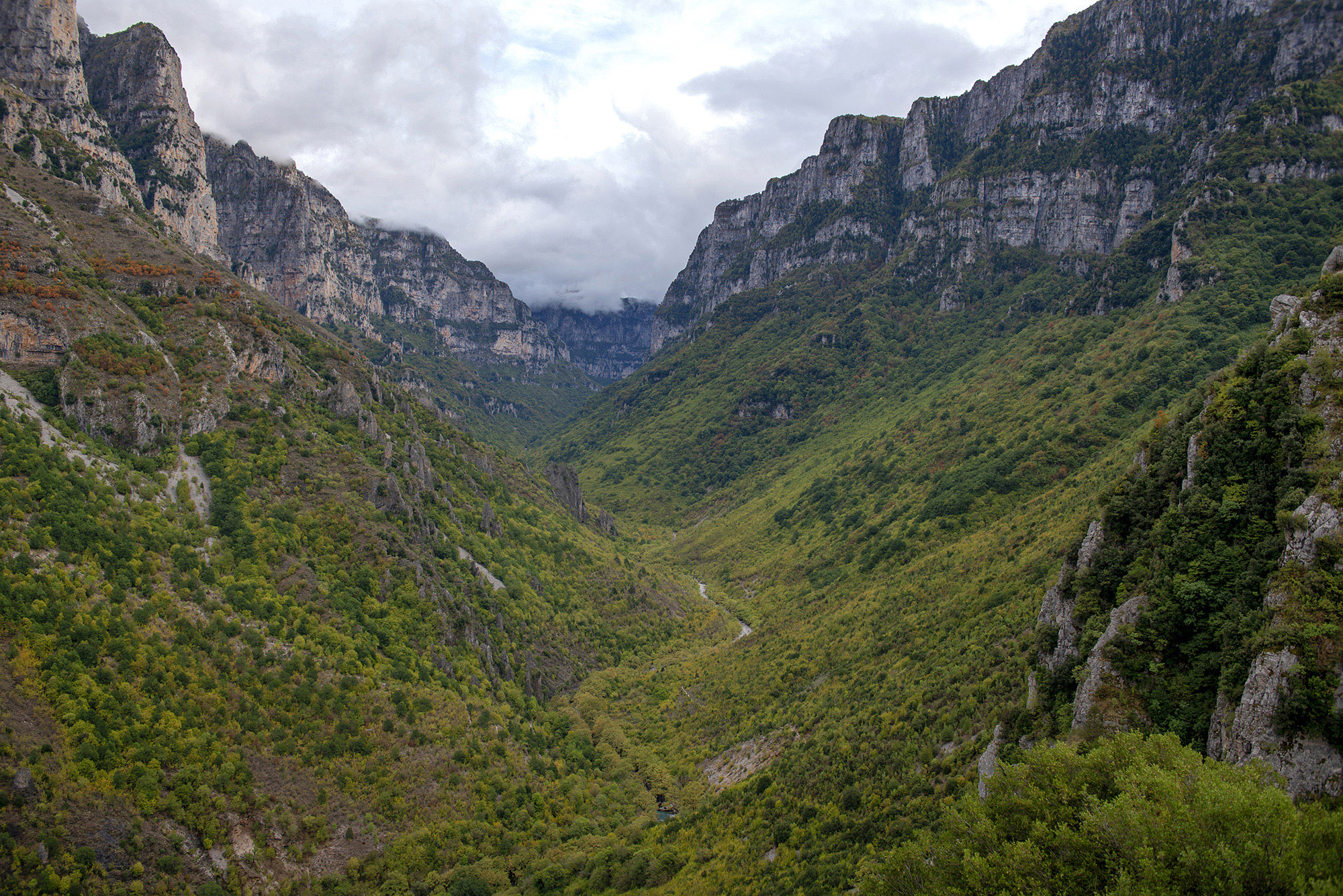
The Vikos Gorge
Obviously you cannot talk about Zagori and not mention the Vikos Gorge, the emblem of the region, a unique natural sight that is hard to pass by. It is one of the most valuable natural wonders in Greece, whose importance is -considering its contribution to the flora and fauna of the region- unimaginable. The gorge has a total length of 11 kilometres, while in some places the depth exceeds 1,000 metres. Voidomatis River, a tributary of Aoos River, runs through the gorge. The route that traverses the gorge is one of the most popular and takes about five hours. These routes are always led by experienced guides who know the area and have the appropriate training. Trekking Ioannina, +30 26510 71703



